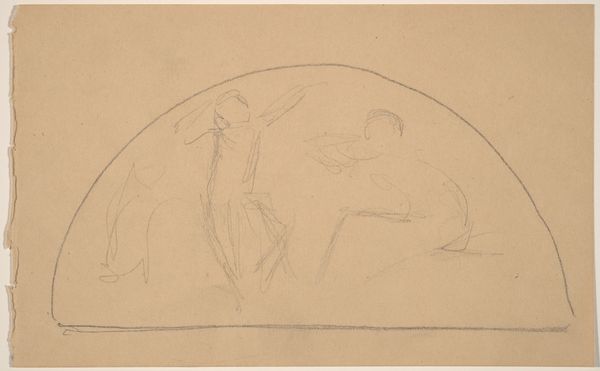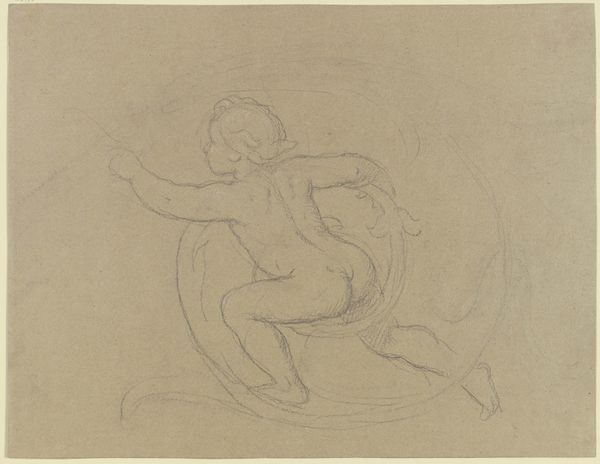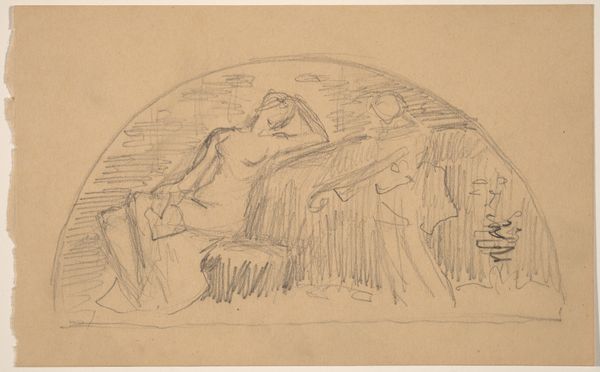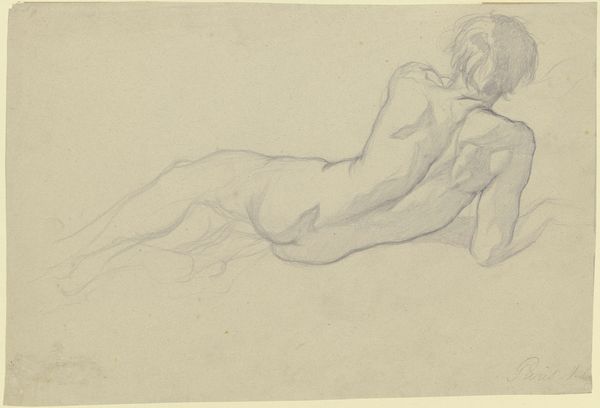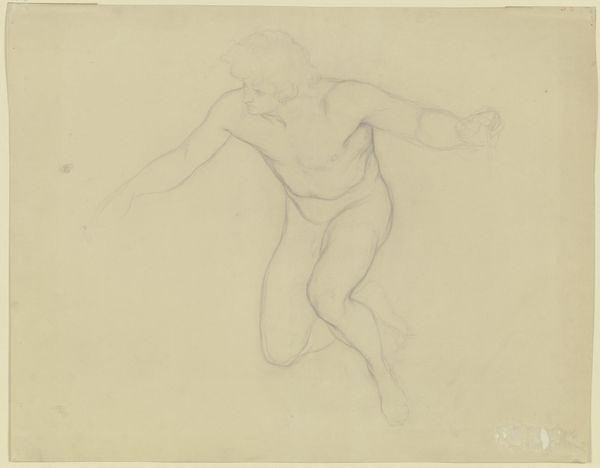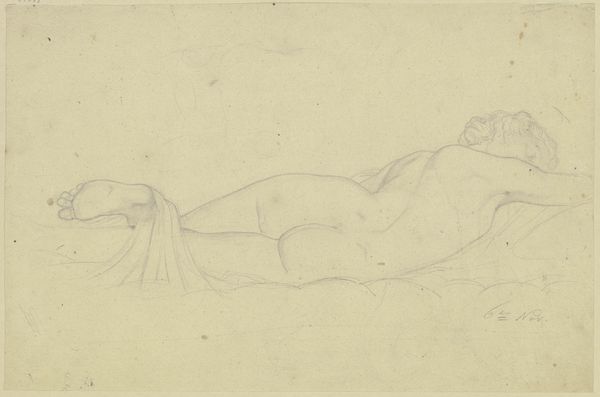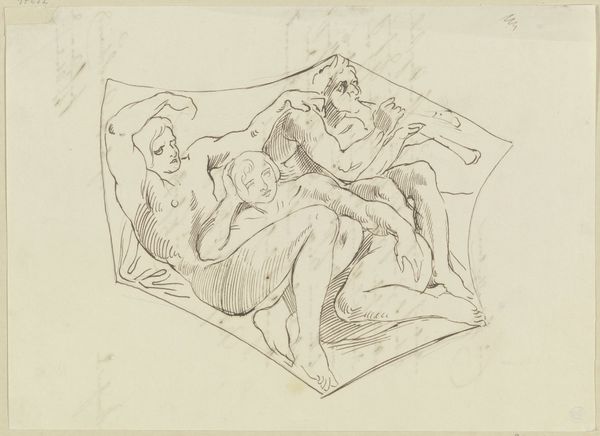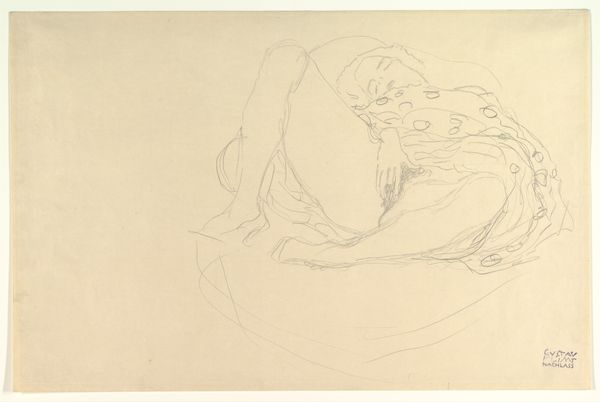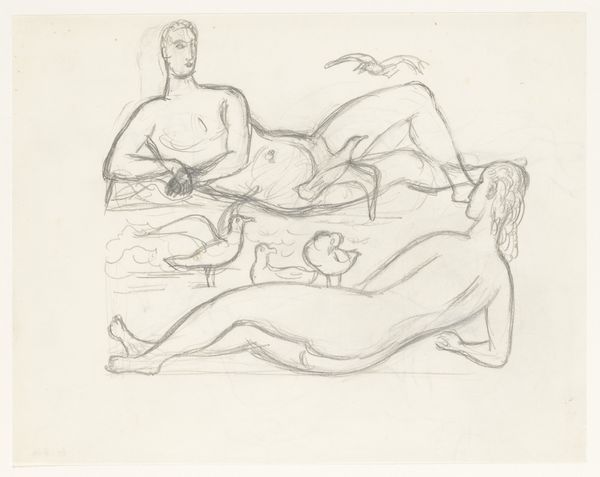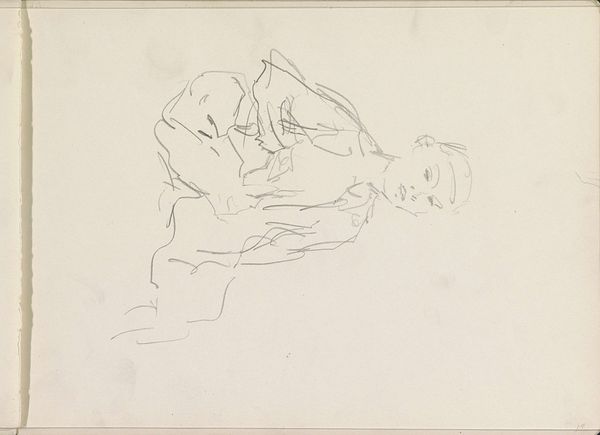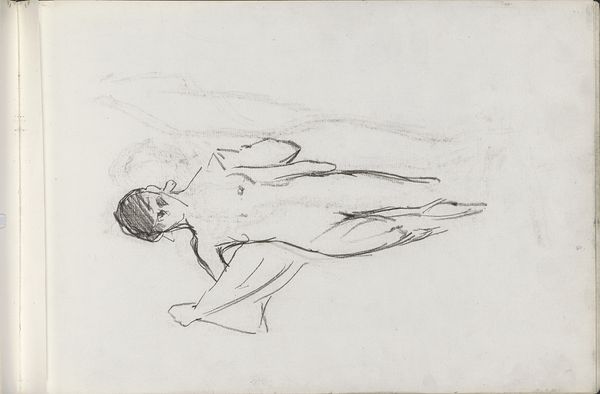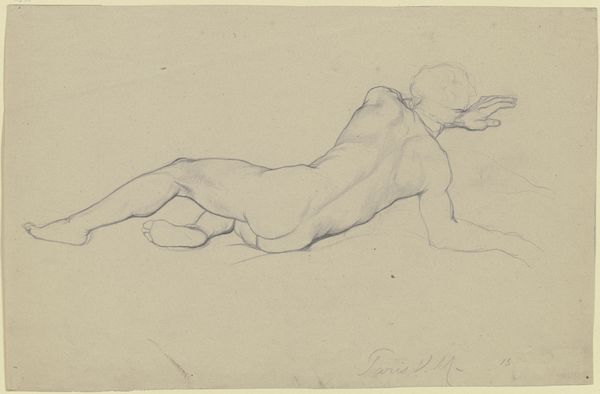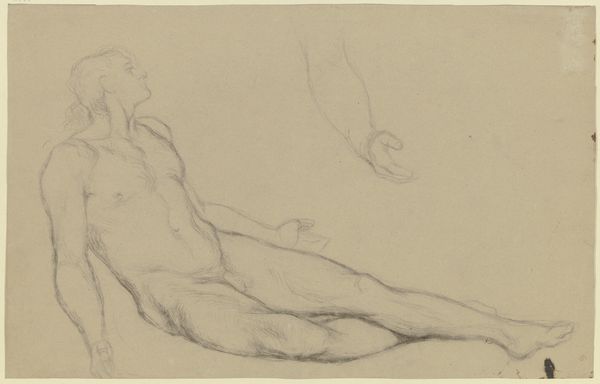
drawing, pencil
#
portrait
#
drawing
#
pencil sketch
#
pencil
#
academic-art
Dimensions: sheet: 11.6 × 18.7 cm (4 9/16 × 7 3/8 in.)
Copyright: National Gallery of Art: CC0 1.0
Curator: Charles Sprague Pearce created this intriguing pencil drawing titled "Study of Figures in a Lunette," sometime between 1890 and 1897. What captures your eye initially? Editor: It's got a dreamlike, fleeting quality. Like a memory surfacing from underwater. I sense this incredible lightness and the figures seem caught mid-motion within this contained architectural space, the lunette. Curator: That lightness really comes from the medium itself, doesn’t it? The graphite pencil allows for quick, iterative sketching, the building-up of form through layering. I'm thinking about how Pearce’s academic training would have emphasized preliminary studies, particularly of the human form. He’s grappling here with composition within a challenging format. We should also keep in mind the historical context of academic art production and the labour invested in acquiring technical skill. Editor: Absolutely. I find myself pondering the lunette shape, which makes me think of celestial realms, a semi-divine space for these figures to inhabit, yet they also appear to be in an introspective mood. Do you think Pearce envisioned a finished artwork from this sketch or was it purely an exercise? Curator: It's hard to say definitively, but considering his established career and the prevalence of academic figure studies in the late 19th century, it likely served as preparation for a larger painting, possibly even a mural project where this composition would function within a carefully controlled public visual economy. The material properties of paper and pencil made it cost-effective. Editor: The pencil lines are quite deliberate, not haphazard. They give me this wonderful sensation that these figures are ready to step out of the page. You mentioned larger paintings or murals – imagine if he had expanded this into one! The intimacy of this sketch hints at this grandiose narrative and scope. Curator: And perhaps the unrealized nature is the source of the drawing's power. The labor of the artist is displayed, allowing viewers a peek behind the curtain. Editor: It’s like catching a whisper of inspiration before it solidified. I’m grateful for the imperfections and the visible process. Curator: Me too. There’s a certain truth in unfinished works, where we can witness artistic decision-making unfold right before our eyes. Editor: Pearce's drawing certainly leaves us with plenty to reflect on.
Comments
No comments
Be the first to comment and join the conversation on the ultimate creative platform.
